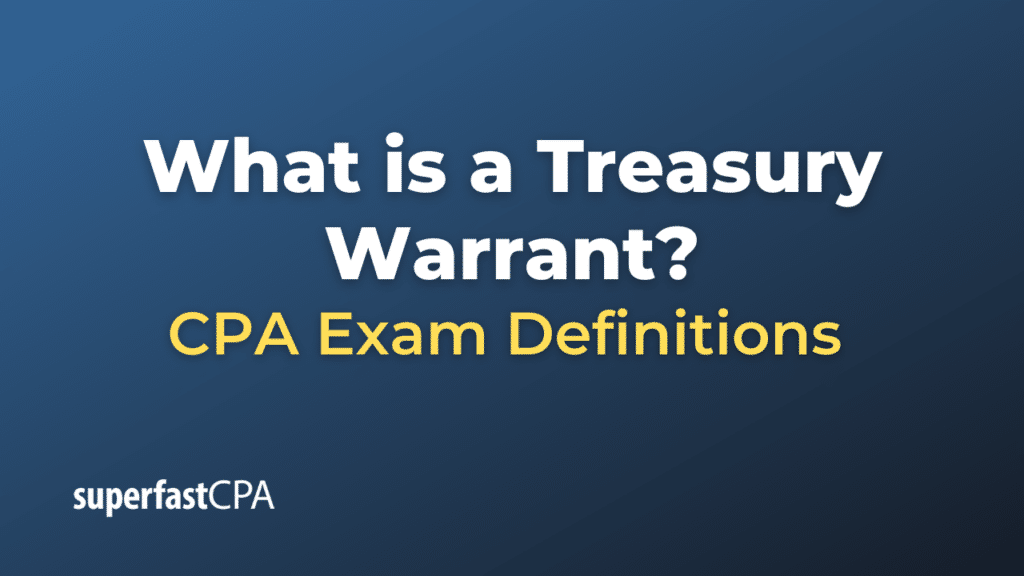Treasury Warrant
A treasury warrant is a financial instrument issued by the government that gives the holder the right, but not the obligation, to buy a specific amount of government securities at a predetermined price within a specified time frame. In essence, it’s similar to an option in the world of equities, but instead of being issued by corporations and dealing with stocks, it’s issued by the government and often pertains to government securities.
Treasury warrants can be used by governments for various reasons, such as:
- Raising Revenue: The government might issue treasury warrants as a way to secure immediate funds. When investors purchase these warrants, they are essentially giving the government cash now with the potential to buy government securities later, often at favorable terms.
- Attracting Investment: By offering the possibility of future profits (if the value of the government security rises above the exercise price of the warrant), treasury warrants can attract more investors.
- Debt Management: Warrants can be combined with other government securities as a form of “sweetener,” making the primary security more attractive to investors.
It’s worth noting that, like all financial instruments, treasury warrants come with their own risks. If the market price of the government security does not rise above the exercise price of the warrant within its specified time frame, the warrant might expire worthless. Investors should be aware of these risks when considering the purchase or sale of treasury warrants.
Example of a Treasury Warrant
Let’s explore a hypothetical example to illustrate how a treasury warrant might work.
Scenario:
Imagine the government of a fictional country named Econland is looking to raise funds for infrastructure projects. To make its debt offering more appealing and to attract a broader range of investors, Econland decides to issue treasury bonds bundled with treasury warrants.
Details:
- Bond Offering: Econland offers a 5-year bond with a 4% annual interest rate. Each bond is priced at $1,000.
- Treasury Warrant Details: With each bond purchase, the investor receives a warrant that grants the right (but not the obligation) to buy another government bond at $900 (the exercise price) anytime within the next 3 years. The typical market price for such a bond would be $1,000 without the warrant.
Potential Outcomes:
- Warrant Exercised: Two years later, due to favorable economic conditions and a stellar credit rating for Econland, the demand for its bonds increases. The market price for a similar bond rises to $1,050. Recognizing this, an investor decides to exercise the warrant to buy the bond for $900, gaining an immediate paper profit of $150 ($1,050 market price minus $900 exercise price).
- Warrant Not Exercised: Alternatively, suppose economic conditions in Econland deteriorate over the next three years. The market price of the bond drops to $850. The warrant holder would choose not to exercise the warrant because they can buy the bond cheaper in the open market at $850 than by using the warrant’s exercise price of $900. In this case, the warrant expires worthless.
Conclusion:
The treasury warrant in this example added a potential value proposition for investors. In the first outcome, the investor benefited from the warrant by securing the bond at a price below market value. In the second outcome, while the warrant itself became worthless, the investor was under no obligation to exercise it and thus didn’t incur further loss from it.
For Econland, the offering was initially more attractive because it bundled the bond with a potentially valuable warrant, which might have helped them attract more investors or secure better terms for their debt.













